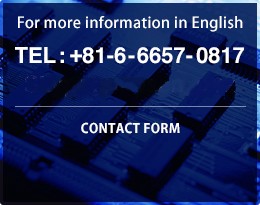- Home»
- PRODUCT OVERVIEW»
- Categories of Printed Circuit Boards
General Printed Circuit Boards
One-Sided, Two-Sided, and Through-hole type of Multi-Layer Printed Circuit Boards
At Satosen we are able to manufacture single-sided, double-sided and through-hole type of multi-layer printed circuit boards. We work with many different materials in producing our circuit boards, including CEM-3, FR-4, High Tg and special substrate materials. Surface treatment includes a variety of treatments, including general flux, lead-free leveler and flash gold plating.
IVH and BVH Multi-Layer Printed Circuit Boards
When it comes to multi-layer models, IVH boards, which connects only the inner layers, and BVH boards, which connect both inner and outer layers, provide a greater degree of design freedom than through-hole models.
Build-Up Printed Circuit Boards
As a general rule, Satosen creates its multi-layer printed circuit boards by building up layers one at a time, utilizing laser via as one method for interlaminar connection. Accordingly, this provides the largest degree of design freedom.
Rigid Flex Printed Circuit Boards
Rigid flex circuit boards are composed of a combination of rigid printed circuit board and a thin, flexible print circuit board. Traditionally, multiple conventional rigid printed circuit boards were connected with a flexible printed circuit board, but the development of the rigid flex circuit board has led to greatly simplified miniaturization and assembly work.
Specialty Printed Circuit Boards
High-Frequency Printed Circuit Boards
When a high-frequency wave signal is used for high-speed transmission, noise is produced with normal circuit boards, causing poor signal transmission. With controlled impedance, the printed circuit board is reducing this noise.
Methods for Reducing Noise
- By adjusting the impedance between the components to be implemented and the circuit, signal reverberation caused by impedance is reduced.
- In order to curb interlaminar interference, at Satosen we only use materials with low conductivity and dielectic tangents.
- Carrying out optimal layer configuration, circuit design and other simulations, technicians measure impedance using test coupons.
Heat Dissipating Printed Circuit Boards
These circuit boards specialize in dissipating the heat that builds up when heat-generating components are loaded.
- The conductor body that forms the circuit is given a thick construction so that surface direction heat dissipation occurs
- Circuits and metal boards and the like are fastened together by an insulation layer that is good at conducting heat, allowing heat to escape via the metal plate and other parts.
- To allow heat to escape to the housing, a metal pin is inserted in the through hole, and the pin and housing are fastened together.
Circuit Boards with Supporting Device Sealing (Preventing Sealing Resin from Leaking)
After components are installed, sealing resin are kept to specific area of components.
Methods of preventing the leakage of sealing resins
- Printed circuit boards with dams
Dams are created by thick silk printing or thick film solder resist.
- Printed circuit boards with spot-facing and cups
Using machining, Satosen is able to produce circuit boards with cavities on their surfaces. These depressions are plated on their insides, acting as highly-effective reflectors.
- Bonded printed circuit boards
These circuit boards are created using lamination layer consisting of a dam structure that holds back sealing resins when the circuit board is constructed. Satosen can create dams that are larger than ② but higher than ①.
Circuit Boards for LED Light-Emitting
Devised to effectively utilize light emissions, these printed circuit boards help curb deterioration in luminescence efficiency when LEDs are installed.
- Heat dissipating printed circuit boards
These circuit boards dissipate LED junction heat. (--> heat dissipating printed circuit boards)
- Printed circuit boards with spot-facing and cups
In an effort to effectively utilize the light that is emitted in the direction of the sides of the LED, plated cups are formed, reflecting the light radiated to the sides to the front as well. Satosen also provides plating suitable for the wavelength of the light coming from the LED.
- Selection of highly reflective solder resists
Satosen provides highly reflective solder resists that do not readily absorb LED-emitted light.



